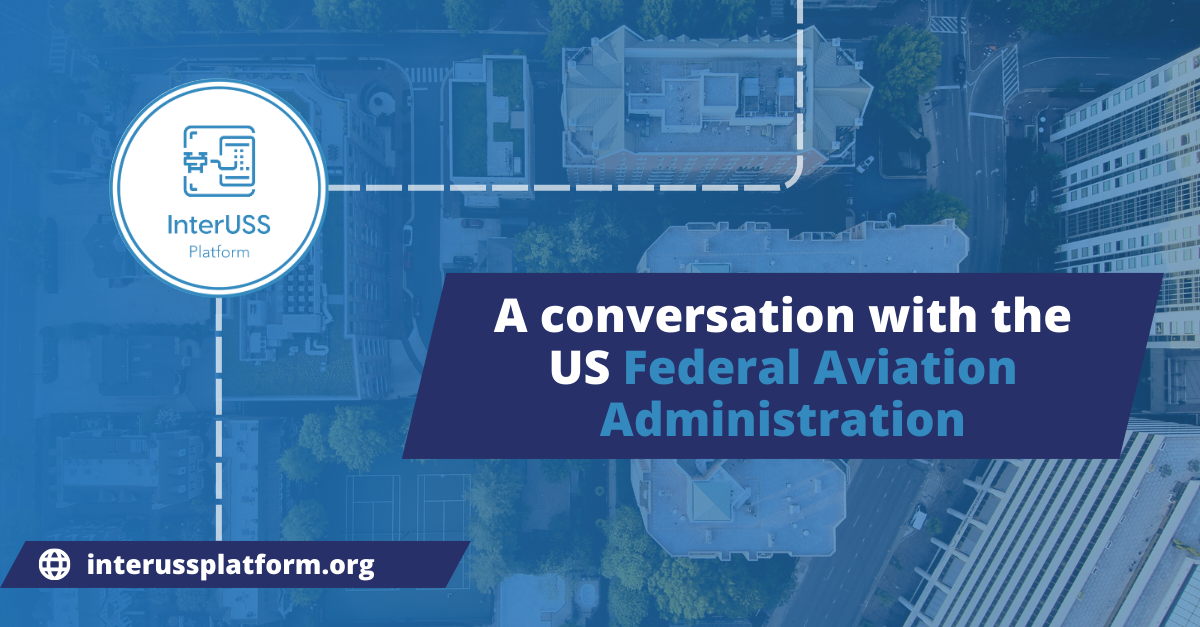The US Federal Aviation Administration (FAA) has had a longstanding vision for UTM and interoperability, progressing from early research and field tests across numerous milestones to the first-of-their kind authorizations for the commercial operational application of UTM. In this process, particularly during the UTM Operational Evaluation, the FAA has overseen the deployment and application of open source InterUSS products across the US.
In our conversation, the FAA emphasized the positive impact on interoperability, market fairness and time savings generated by the InterUSS implementation of the ASTM Discovery and Synchronization Service for strategic coordination and the InterUSS Automated Test Suite.
- The FAA and industry stakeholders have employed the InterUSS implementation of the ASTM Discovery and Synchronization Service (DSS) and Automated Testing to operationalize strategic coordination in the UTM Operational Evaluation. While the effort began in North Texas, where else are participants operationalizing this?
FAA: At the FAA, we began working with the industry on the UTM Operational Evaluation with their proposal for using UTM services to support BVLOS operations in North Texas. Since the FAA reviewed and accepted the first UTM strategic coordination services in July 2024, the industry service providers have begun utilizing UTM strategic coordination services to support operators in the states of Texas, Utah, Arkansas, and New York. In the UTM Operational Evaluation, the FAA uses the InterUSS automated test suite for our review and acceptance of UTM services. The UTM service providers participating in the UTM Operational Evaluation have utilized the InterUSS DSS implementation to support their USS strategic coordination service.

- What should our readers, especially Civil Aviation Authorities, know about implementing the ASTM Discovery and Synchronization Service (DSS)?
FAA: The InterUSS capabilities have provided a method of predictability for implementing ASTM DSS pooling. This allows the flexibility to utilize multiple DSS instances and provides a level of redundancy and market fairness. Additionally, the DSS can be validated within automated testing to verify interoperability within the pool and with any USS Service Provider.
- InterUSS Automated Testing can be employed by Civil Aviation Authorities to automatically onboard service providers. How did the FAA oversee the implementation of InterUSS Automated Testing for this purpose? What were the learnings?
FAA: The FAA has oversight of the implementation of the InterUSS Automated Testing for UTM Service Providers (USPs) in the United States. Automated Testing Services provide a level entry point for all participants and supports various levels of technical proficiency. The implementation of the InterUSS Automated Testing is valuable in reducing the onboarding timeline for new service providers, especially new participants with limited advanced knowledge of onboarding.
- How does the FAA see the progression of automated testing adoption to support continued UTM implementation across the US?
FAA: The InterUSS Automated Testing may prove to be a mechanism to exchange data as required by appropriate community-based standards while maintaining consistent implementations. The FAA believes InterUSS Automated Testing will continue to support UTM integration and provide a level-playing field for all new service providers by creating an objective baseline.
- Why are global extensibility and harmonization of strategic coordination and other UTM/U-Space principles so important? How do the open source implementation of the ASTM Discovery and Synchronization Service (DSS) and Automated Testing facilitate other Civil Aviation Authorities across the world leveraging the work that has already been pioneered here?
FAA: Open-source options for DSS and automated testing could support global UTM Service Provider consistency and interoperability with consistent onboarding and validation of new UTM services. Additionally, it may lessen the timeframe for validating and approving new services in the future.